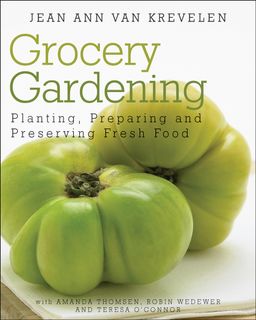.jpg) |
| Photo by RC Designer on Flickr |
Borage, (Borago officinalis): This annual grows 2 to 4 feet tall with purplish blue, star-shaped flowers that "make the mind glad," according to renowned 16-century herbalist John Gerarde. Sow seeds in a sunny spot after the last frost, or earlier in warm climates. Borage tolerates most soil types and usually reseeds itself. Transplanting isn't recommended due to the taproot.
Borage adds a cucumber taste to salads, dips and cold soups. Freeze flowers in ice cubes to float in decorative drinks. In large amounts, borage may have a diuretic effect.
 |
| Photo by Isabel Gomes |
Sometimes called "poor man's saffron," calendula has a slightly bitter taste. Petals add color to scrambled eggs, cheeses, poultry and rice. Try chopped leaves and petals in soups, salads and stews. Use caution if you have allergies to ragweed, asters and other members of the Compositae family.
 |
| Photo by Eran Finkle on Flickr |
Chamomile's sweet apple flavor and fragrance make a delicious tea. Steep a teaspoon of fresh flowers with a cup of boiled water for 3 minutes covered. Strain and serve. Use caution if you have allergies to the Compositae family.
 |
| Photo by Isabel Gomes |
Chive (Allium schoenoprasum): This perennial grows 8 to 20 inches tall, with pink and lavender flowers that have flavored meals for centuries. It prefers full sun and moist, well-drained soil, high in organic matter. Planting rooted clumps is the easiest way to propagate chives. Seeds germinate slowly and require darkness, constant moisture and temperatures of 60°F to 70°F. Grows in Zones 3 to 9. Divide plants every couple years. Chives grow well in sunny windows.
Break apart chive florets to add mild onion flavor to dinner rolls, casseroles, eggs, potatoes and herb butters.
 |
| Photo by Isabel Gomes |
Not all lavenders have the same culinary qualities. The most popular are Lavendula angustifolia and Lavendula x intermedia 'Provence.' Lavender's floral taste combines well with rosemary and thyme in chicken and lamb marinades. Add a teaspoon to sugar cookie and cake recipes. A little lavender goes a long way; too much tastes soapy.
 |
| Photo by Isabel Gomes |
Flowers and leaves add peppery taste to salads, herb vinegars, sandwiches and even pizzas. Immature pods can be pickled and used as capers.
 |
| Photo by Isabel Gomes |
Rose (Rosa spp.): Eating roses back to the ancient Romans. Roses grow best in rich, well-drained soil with full sun and good air circulation. These plants prefer regular pruning, watering and fertilizing. The older varieties, such as Rosa rugosa and Rosa gallica, are considered the best tasting roses.
Petals add a floral flavor to jellies, honey, vinegars and salads. For rose sugar, mince one part petals with two parts sugar and leave covered for a month. Strain and use for baking cookies, cakes and sweet breads. Rose hips make a delicious tea high in vitamin C.
Sweet Violet (Viola odorata); Johnny-jump-up (Viola tricolor); Pansy (Viola x wittrockiana): These three violas are old-fashioned culinary favorites that bloom best in cool weather, and prefer rich, moist, well-drained soil. Partially shaded locations are preferred in hot climates.
Sweet violets are perennials with aromatic purple or white flowers. Typically hardy to Zone 5, violets are usually propagated by dividing clumps. Johnny-jump-ups and pansies are annuals easily found as transplants in garden centers. Johnny-jump-ups have saponins, which can be toxic in large amounts.
These pretty flowers add sweet, perfumed or wintergreen flavor to salads, fruit and vegetables. Float flowers in punch, or candy the petals for elegant cakes and cookies.
Three Important Tips:
Not all flowers are safe to eat. Know what you are eating or check a good reference if you aren't sure a particular plant is edible. Sometimes only a portion of a plant can be eaten. Rhubarb stems are edible, for example, but not the flowers, leaves or roots. When in doubt, be cautious.
Many garden centers, nurseries and florists treat flowers with systemic pesticides not labeled for food crops. Consume only flowers grown specifically for culinary purposes. Growing your own edible flowers is the best way to ensure a fresh, healthy supply.
Introduce flowers into your diet gradually. If you have allergies, try one species at a time. Eat only the petals on most edible flowers (Violets, pansies and Johnny-jump-ups are an exception.) Just before eating, remove interior flower parts such as the pistils and stamen. These can taste bitter and the pollen may cause allergic reactions in susceptible people.
Portions of this article appeared in Gardening How-To Magazine online and print.
Learn More:
Edible Flowers Chart from About.Com
Tips from What's Cooking America






























